QuestionI've heard about cats chasing laser lights, shadows, etc. for fun and my cat is obsessed with shadows and that is her main source of entertainment. I figured it wasn't hurting anything, so why not let her enjoy herself?
Well, I am seriously getting worried about her and this obsession with light and shadows. It's gotten to the point where she hardly comes upstairs because there are such great shadows downstairs. The sunlight shines through the windows on the stairs and she makes her own shadows by running around in the sun. It sounds funny, I know, but I can't even pick her up without her freaking out about the shadows and she won't play with any of her other toys anymore.
I find her sitting on the stairs every morning, waiting for the light outside to come on (motion light). When I come home at night she waits for her treats and then runs downstairs. She is just frantic about these shadows and I really think she has a problem. She's becoming withdrawn and non-social. What do I do with her??
AnswerI would continue to try to distract her with toys or treats.
I would also recommend FELIWAY diffusers in the house to help with underlying anxiety.
Flower Essences may also be of benefit to her....more info below
If the obsession continues, she may benefit from some anti-anxiety medication such as Amitriptyline.
========================================
OCDs may be defined as normal behaviors gone awry, or abnormal expressions of normal activities. They are repetitive by nature, out of context, and without any apparent purpose. They can also be quite disturbing to the owner. OCDs will most often occur in animals who are stressed, anxious, or even bored. Some pedigrees are more genetically prone to OCD than other animals.
Often in these cases, a veterinarian will recommend behavior modification along with medication. Whereas this approach is sometimes successful, it also carries certain contraindications. Several pet owners have reported that psychotropic drugs have actually blotted out their pets' personalities! However, negative reactions to flower essences are virtually nonexistent since the essences are not subject to overdoses or to contraindications. If your client or your own pet seems to exhibit a negative response to an essence mixture, it is helpful to assess whether other variables in the animal's life may be responsible.
Pear, Almond and Lettuce for OCD
In the Master's line of 20 essences, three in particular have been reported useful for OCDs: Pear as mentioned above, and also Almond and Lettuce. One owner of an exotic bird reported that the bird ceased his obsessive calling with Almond and Lettuce essences. "He is changing day by day," she said, "and our house is so peaceful!"
Almond essence, when given to people, is for calmness through self-control. For animals, it helps to dispel excessive, repetitive behaviors, which may be their attempt to calm themselves when something has disturbed them. Animals may be distressed by being confined in too small a living space, being left alone too often, or living with other animals with whom they may not get along. Current research reveals that repetitive actions trigger the release of endorphins, much like the "high" experienced from exercising.
Almond is for unbalanced or immoderate actions over which the animal seemingly has lost control. This essence was recently given to Callie, a rescue cat who exhibited OCDs that did not respond to veterinary care. "In one day on Almond," the vet reported, "Callie stopped crying and pacing and returned to normal behavior."
Lettuce essence, likewise, has a calming effect. The lettuce plant itself contains minute amounts of a mildly hallucinogenic chemical. Whereas the flower essence form of the plant does not have hallucinogenic properties, nonetheless Lettuce essence does possess the ability to help animals and humans alike to relax the tensions that cause restlessness, nervousness, and emotional agitation. It is especially helpful for younger animals who may tend to get too wound up and over-excited. While it does not dampen their natural enthusiasm for life, it does help them to stop bouncing off the walls!
One dog trainer not only gave Lettuce to her puppy, but to her husband as well. "He trains dogs," she said, "and the dogs were driving him crazy -- he was a time bomb ready to explode. Even though he was quite skeptical, I gave him some Lettuce essence and we both noticed results immediately." Their 3-month-old puppy in training was barking incessantly and "nothing was going to stop him. I went outside and put 2 drops of Lettuce on the puppy's nose and we did not hear a word from him the rest of the day."
Some Causes of OCD in Animals
Flower essences in conjunction with loving and consistent training are a highly successful combination. By treating our pets with respect and regularity, and by setting gentle but firm perimeters, we create environments and relationships in which they can learn to trust profoundly and love unconditionally.
Knowledge of animals' instinctive behavior is of paramount importance in order to understand their natures and their needs. Dogs, for example, are pack animals. Separation anxiety syndrome, a prime cause of OCDs, is one of the problems most commonly reported by dog owners. Although some canines handle being left alone better than others, many will go into a state of panic. They may feel as though their very lives are threatened by what to them is a highly unnatural situation. Wired into their genetic makeup is the instinctive wisdom that their very survival is dependent on their pack, in which their people play important roles. Common OCDs for dogs are pacing or spinning, tail chasing, inappropriate suckling, fence running, self-mutilation and hair biting.
Horses too can experience OCD. It is estimated that 15% of domestic horses express OCD through pawing, weaving, pacing, cribbing, blanket-chewing, or head-bobbing. Cribbing describes the behavior of a horse grabbing an object and pulling back his neck to gulp air. Horses in their natural habitat follow their wisdom and thus avoid OCD behavior.
Cats, especially those kept indoors, exhibit OCDs through excessive meowing, pacing, over-grooming, self-mutilation, tail chasing, and suckling or chewing on fabric or plastic. They, too, need an active and engaging lifestyle to ensure their happiness and well-being.
Other Factors Contributing to OCD
Animals in their natural habitat do not, for the most part, suffer from OCD. Although clinical trials are difficult -- if not impossible -- to conduct with a population in the wild, it is safe to say that abnormal behavior stems from what, to the animal, is an abnormal environment. OCD is often their coping mechanism for dealing with a foreign environment and an unnatural lifestyle. The root cause of an animal's disturbed behavior most often lies not with them but with the environment to which we are asking them to adapt. Many pet owners may not even be aware of their contribution to the problem. Fortunately, they can easily correct the situation.
Key sources of tension for any animal are understimulation, excessive confinement and neglect. An understanding of their instinctive natures -- both of species and breed -- can give us an infinite number of clues about how to keep them happy and, as a result, healthy. In truth, our pets are our guests in our homes and in our yards. We must remember that our world is not naturally theirs and do our best to accommodate them.
We can achieve this through holistic treatment such as flower essences, proper diet and regular feeding times, exercise, excellent veterinary care, an accommodating environment in the home and yard, consistent training, and our love expressed through spending both quality and quantity time with them. Attention to the many facets of natural pet care, along with the sensitive application of flower essences, creates a beautiful life for the animals we so dearly love.

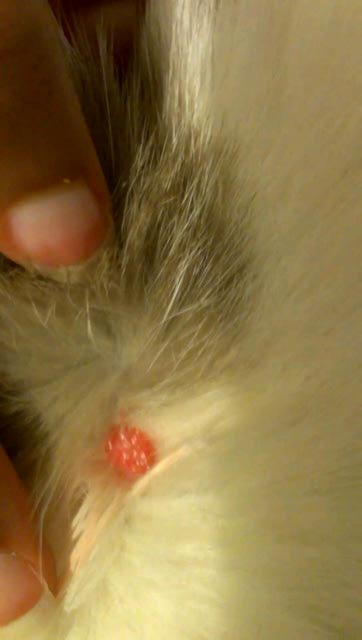 Red sore on my cat
Question
Cat Sore
Hi. I recently noticed a
Red sore on my cat
Question
Cat Sore
Hi. I recently noticed a
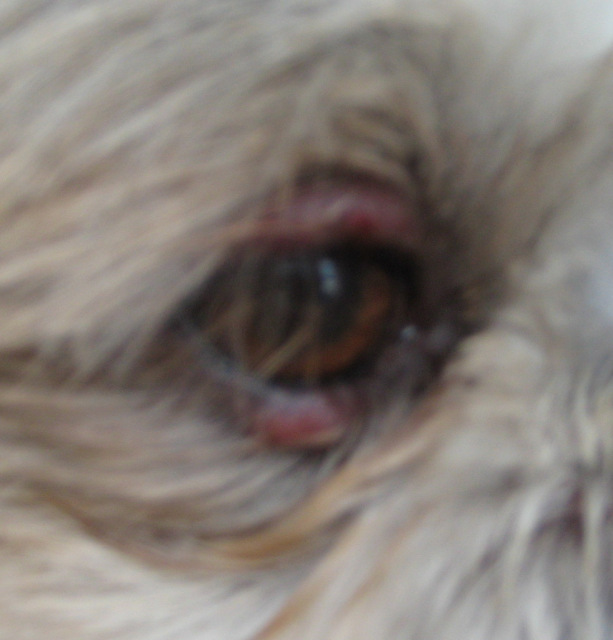 Shih-Tzu eyelide problem
Question
swollen eyelids
Hi,
Its been about 2 weeks no
Shih-Tzu eyelide problem
Question
swollen eyelids
Hi,
Its been about 2 weeks no
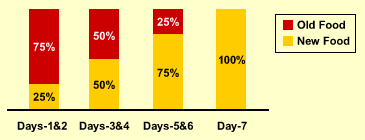 regurgitation
QuestionMy Cat is 4, indoor, and quite small with short
regurgitation
QuestionMy Cat is 4, indoor, and quite small with short
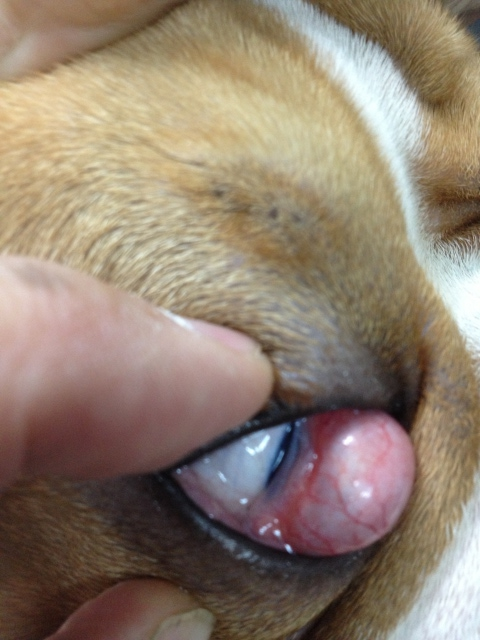 cherry eye
Question
Dog eye Dog eye
My 5 months old F
cherry eye
Question
Dog eye Dog eye
My 5 months old F
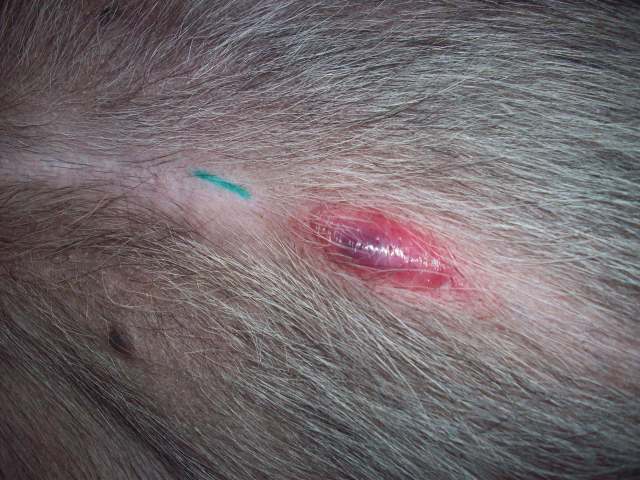 What is this sore?
Question
Sore
Just noticed this sore on my dogs belly t
What is this sore?
Question
Sore
Just noticed this sore on my dogs belly t